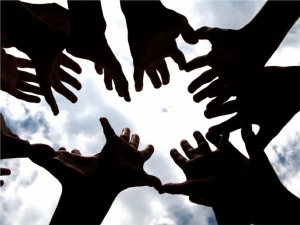Throughout human history innovation has been driven by the  need to solve social problems. This was true from the dawn of agriculture (need to feed a growing population); to the present when technology controls the natural world and causes as many problems as it solves. Social innovations are sorely needed to address a series of complex and challenging social problems. This article lists some of the main social problems and then outlines the conditions that elevate some issues to the status of a social problem. After that you will find some insights from C. Wright Mills 1959 classic “The Sociological Imagination.”
need to solve social problems. This was true from the dawn of agriculture (need to feed a growing population); to the present when technology controls the natural world and causes as many problems as it solves. Social innovations are sorely needed to address a series of complex and challenging social problems. This article lists some of the main social problems and then outlines the conditions that elevate some issues to the status of a social problem. After that you will find some insights from C. Wright Mills 1959 classic “The Sociological Imagination.”
WHAT ARE THE MOST SERIOUS SOCIAL PROBLEMS?
The following are widely recognized as being important social problems. They affect a lot of people and require social innovations for their solution.
Environmental problems
- Natural disasters
- Population pressures
- Water and air pollution
- Urbanization and sprawl
- Shrinking energy supplies
Problems of inequality
- Economic
- Sexism
- Racism
- Ageism
Problems of violence
- War and terrorism
- Family violence
- Non-family (crime)
Economic problems
- Corporate Corruption
- Unemployment
- Growing deficits and debt
- Inadequate housing
WHAT TURNS OBJECTIVE CONDITIONS INTO SOCIAL PROBLEMS?
Not all social conditions become elevated to the status of “social problem.” For example, some objective conditions which exist today are not considered to be social problems. Many of them draw relatively little public concern. A number of conditions must be met before an objective reality in the society becomes elevated to the special status of social problem. They include:
- The objective condition must be perceived to be a social problem by a significant number of important people. There must be some public outcry. People must become actively involved in discussing the problem. Public attention becomes directed toward that social condition.
- The condition must involve a gap between social ideals and social reality. That is, the condition must run counter to the values of the larger society. This is often referred to as a sense of relative deprivation.
- A significant proportion of the population must be involved in defining the problem. If only a small segment of the population gets involved you have an interest group pushing for the general public to do something about the condition– not a social problem). A condition affecting a relatively small segment of the population is less likely to be considered a social problem than if it has adverse effects on a much larger segment of society.
- The condition must be capable of solution through collective action. If no solution is perceived possible, people will resign themselves to their fate. The issue becomes an accepted part of life that people learn to live with.
- If people affected by a condition are influential, or powerful, the condition is more likely to be considered a social problem than if those affected are not influential. When a condition begins to affect the white middle class, the chances of it being considered a social problem increase substantially.
- A rapid increase in the number of people affected by a social condition is also important. Therefore, the mass media and Internet both play important roles in the selection and definition of social problems. Media outlets give selective attention to certain conditions. The liberal press will highlight certain issues while the conservative press will select others.
- Ideology plays an important role in determining which conditions are singled out as social problems. Ideology also determines how a social problem is defined. Conservatives and liberals agree that America has a poverty problem– but they do not agree on a specific definition of the problem, nor do they agree on how the problem should be solved.
HOW ARE SOCIAL PROBLEMS DIFFERENT FROM INDIVIDUAL TROUBLES?
The following ideas and insights are abstracted from the classic (1959) book by C. Wright Mills, The Sociological Imagination.
People do not usually define the troubles they endure in terms of historical change and institutional contradiction. The well-being they enjoy, they do not usually impute to the big ups and downs of the societies in which they live. Seldom aware of the intricate connection between the patterns of their own lives and the course of world history, ordinary men do not usually know what this connection means for the kinds of men they are becoming and for the kinds of history-making in which they might take part. They do not possess the quality of mind essential to grasp the interplay of man and society, of biography and history, of self and world. They cannot cope with their personal troubles in such ways as to control the structural transformations that usually lie behind them. …
No social study that does not come back to the problems of biography, of history and of their intersections within a society has completed its intellectual journey. Whatever the specific problems of the classic social analysts, however limited or however broad the features of social reality they have examined, those who have been imaginatively aware of the promise of their work have consistently asked three sorts of questions:
(1) What is the structure of this particular society as a whole? What are its essential components, and how are they related to one another? How does it differ from other varieties of social order? Within it, what is the meaning of any particular feature for its continuance and for its change?
(2) Where does this society stand in human history? What are the mechanics by which it is changing? What is its place within and its meaning for the development of humanity as a whole? How does any particular feature we are examining affect, and how is it affected by, the historical period in which it moves? And this period-what are its essential features? How does it differ from other periods? What are its characteristic ways of history-making?
Perhaps the most fruitful distinction with which the sociological imagination works is between ‘the personal troubles of milieu’ and ‘the public issues of social structure.’ This distinction is an essential tool of the sociological imagination and a feature of all classic work in social science.
Troubles occur within the character of the individual and within the range of his immediate relations with others; they have to do with his self and with those limited areas of social life of which he is directly and personally aware. Accordingly, the statement and the resolution of troubles properly lie within the individual as a biographical entity and within the scope of his immediate milieu-the social setting that is directly open to his personal experience and to some extent his willful activity. A trouble is a private matter: values cherished by an individual are felt by him to be threatened.
Issues have to do with matters that transcend these local environments of the individual and the range of his inner life. They have to do with the organization of many such milieux into the institutions of an historical society as a whole, with the ways in which various milieux overlap and interpenetrate to form the larger structure of social and historical life. An issue is a public matter: some value cherished by publics is felt to be threatened. Often there is a debate about what that value really is and about what it is that really threatens it. This debate is often without focus if only because it is the very nature of an issue, unlike even widespread trouble, that it cannot very well be defined in terms of the immediate and everyday environments of ordinary men. An issue, in fact, often involves a crisis in institutional arrangements, and often too it involves what Marxists call ‘contradictions’ or ‘antagonisms.’
In these terms, consider unemployment. When, in a city of 100,000, only one man is unemployed, that is his personal trouble, and for its relief we properly look to the character of the man, his skills, and his immediate opportunities. But when in a nation of 50 million employees, 15 million men are unemployed, that is an issue, and we may not hope to find its solution within the range of opportunities open to any one individual. The very structure of opportunities has collapsed. Both the correct statement of the problem and the range of possible solutions require us to consider the economic and political institutions of the society, and not merely the personal situation and character of a scatter of individuals.
Consider war. The personal problem of war, when it occurs, may be how to survive it or how to die in it with honor; how to make money out of it; how to climb into the higher safety of the military apparatus; or how to contribute to the war’s termination. In short, according to one’s values, to find a set of milieux and within it to survive the war or make one’s death in it meaningful. But the structural issues of war have to do with its causes; with what types of men it throws up into command; with its effects upon economic and political, family and religious institutions, with the unorganized irresponsibility of a world of nation-states.









Aug 01, 2010 @ 14:11:01
In one day out of my comfortable surroundings, I have been amazed at how many people I have met that are truly struggling to survive….but I am more amazed at those that are doing it with a smile on their face…that is the reason for HOPE and the power of LOVE!!!